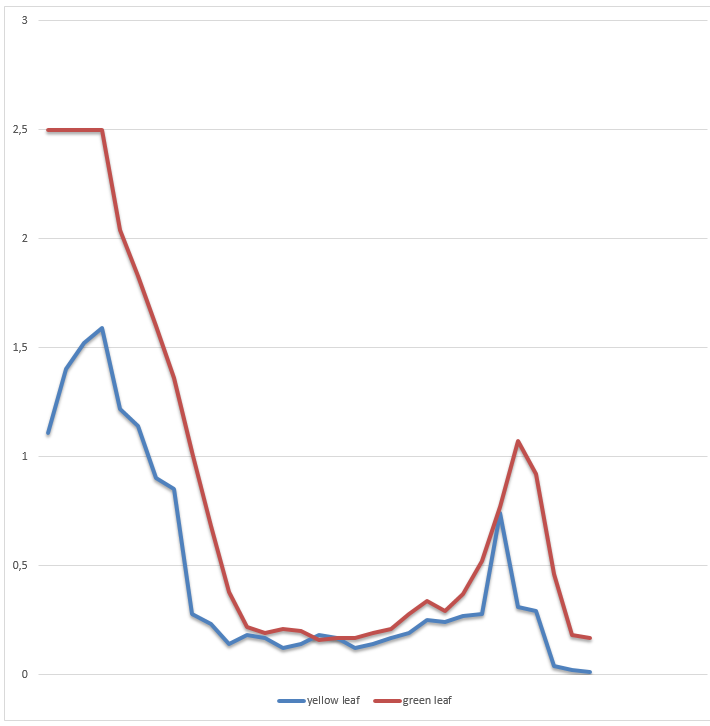Introduction
Issue
The case involves a disagreement between Horatio and Ashley. Horatio says that yellow leaves have colored pigments and the green leaves do not while Ashley states that the green leaves have colored pigments.
Theoretical background
In nature, light occurs in both visible and invisible spectra with varying wavelengths (ƛ). The visible light spectrum ranges in wavelength between 400nm (violet end) and 700nm (red end). The theory of spectrophotometry states that substances in nature can absorb, transmit or reflect light when a beam or ray of light is incident on the surface of an object. A substance absorbs or transmits all other wavelengths and reflects one wavelength. The color of the reflected wavelength gives the observed color of the object because the human eye detects the color of the wavelength coming from the object. Therefore, a green or yellow object means that the wavelength reflected by that object is green or yellow respectively.
In plants, pigments absorb light in the wavelength range of 400nm to 700nm. The range is known as photosynthetic-active radiation. Studies have shown both violet and blue plant pigments, which have the highest amounts of energy involved in photosynthesis, have the shortest wavelengths. On the other hand, red pigments have the least amount of energy but the longest wavelength. Like other substances, pigments can absorb some light wavelengths but reflect or transmit others. Carotenoids and chlorophylls are the major types of pigments found in higher plants and algae. In higher plants, the chlorophyll pigment occurs in four basic types: – a, b, c, d, and the bacteriochlorophyll.
Chlorophylls type “a” and “b” absorb light energy in specific regions. In this case, the two pigments are only able to absorb at the red and blue regions respectively and reflect the light energy in the green region. It has also been shown that the energy capture in the carbon dioxide fixation within the plant chloroplasts indicates two peaks in visible light. The first peak is in the blue region (450-495nm) and the second is the red region (620-750nm). The green region has low or no absorption and is indicated by the “troughs” in an absorption graph. On the other hand, carotenoids are only able to absorb energy in the violet as well as Blue-green regions but reflect all others, which give the leaves various colors.
The function of these pigments is to collect excess energy and dispose of it to avoid the harm that such light can cause on the leaves. This means that a leaf with a large number of carotenoid pigments will be lacking chlorophylls and have some other color except green. On the other hand, plants that are actively carrying out photosynthesis are green because of the green wavelength reflected by the chlorophyll pigments.
Method
In solving this case, the knowledge of photosynthetic chlorophyll molecules and their behaviors was combined with the spectrophotometric method to determine which argument was right. Pigments were obtained from the two types of leaves and exposed to a beam of light in a spectrophotometer. Two peaks were expected- the blue peak (450-495nm) and the red peak (620-750nm). If a pigment shows a high peak within these regions, it means that it has a high content of the photosynthetic pigments (chlorophylls). Therefore, it was expected to be active in the energy synthesis for the plant. The results below were obtained using the spectrophotometry method.
Results

Between 410 and 500, there is are “peaks” in the two types of pigments. However, the peak of the curve representing the green leaf is larger than the peak of the curve representing the yellow leaf. Similarly, the green pigment has a higher peak than the yellow leaf pigment in the red region (610 to 700nm). This shows that the green leaf pigment has more chlorophyll molecules than the yellow leaf pigment.
Conclusion
The argument is that the green leaf has more photosynthetic pigments than the yellow leaves. Thus, Ashley is right. Horatio must account for the day’s supper because he has lost the game.